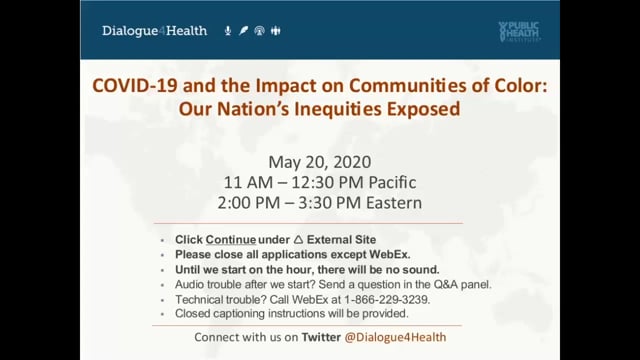Alcohol, drug and suicide deaths up in 27 states
(Washington, DC – May 21, 2020) – Newly released data show that 151,964 Americans died due to alcohol, drugs or suicide in 2018. This 2018 national death rate for alcohol, drug and suicide deaths was only very slightly lower than what it had been in 2017 despite progress in reducing deaths due to some types of opioid overdose, according to a new study by Trust for America’s Health (TFAH) and Well Being Trust (WBT).
Between 2017 and 2018, 27 states experienced higher rates (increases above 0.04 percent) of alcohol, drug and suicide deaths. Two states, Vermont and Delaware, experienced double-digit death rate increases – 13 percent and 10 percent respectively. Twenty-three states and the District of Columbia had lower alcohol, drug and suicide deaths during the same period.
States with the highest alcohol, drugs and suicide death rates in 2018 were:
- West Virginia (84.9 per 100,000)
- New Mexico (82.8 per 100,000)
- New Hampshire (68.2 per 100,000)
- Alaska (67.8 per 100,000)
- Delaware (62.9 per 100,00)
States with the lowest alcohol, drug and suicide rates in 2018 were:
- Texas (31.7 per 100,000)
- Mississippi (31.7 per 100,000)
- Hawaii (34.6 per 100,000)
- Nebraska (35.5 per 100,000)
- Iowa (35.7 per 100,000)
For the year, alcohol deaths were up 4 percent and suicide deaths were up 2 percent across the country. The new data also show a continuing shift within the opioid crisis with reductions in deaths due to prescription opioid abuse but increases in deaths involving synthetic opioids including fentanyl. Death rates for all opioids were down 2 percent, but the death rate for synthetic opioids was up 10 percent. Additionally, heroin deaths were lower but deaths due to cocaine and psychostimulants abuse were higher.
While still disturbingly high, the 2018 data is the first time since 1999, when the current data collection began, that there hasn’t been a sizable increase in the national alcohol, drugs and suicide deaths per 100,000 rate. However, this stabilization in the deaths rate was not uniform. Some places and populations groups are experiencing stable or decreasing deaths rates while rates among other groups or in other places are continuing to rise.
“These data are a clarion call to action,” said John Auerbach, President and CEO of Trust for America’s Health. “We know what works to address deaths of despair but progress has been uneven and death rates continue to climb, with communities of color experiencing higher rates of increases in drug and alcohol deaths. And there’s another immediate concern: the COVID-19 crisis has increased the health burdens and economic pressures on many communities of color.”
American Indians, Asians, Blacks, Latinos and older adults all experienced increases in drug-induced deaths between 2017 and 2018. Blacks and American Indians had the largest increase. Blacks now have higher synthetic opioid overdose rates (10.7 per 100,000), cocaine overdose rates (8.8 per 100,000) and nearly the same overall drug-induced death rate (21.8 per 100,000) as Whites, after decades of having substantially lower overdose rates. Population groups that experienced lower drug-induced death rates in 2018 included adults ages 18-54 and Whites.
“Quite simply, too many Americans are dying from preventable causes. The profound racial health disparities seen in these data show that many ethnic minority groups are being left behind in our response efforts,” said Benjamin F. Miller, PsyD, chief strategy officer, Well Being Trust. “The nation needs a comprehensive framework for excellence in mental health and well-being, one that intentionally provides solutions for American Indians, Blacks, Asians and Latinos. With all the other COVID-19 related investments, it’s time for the federal government to fully invest in mental health now and for all states to take action.”
Deaths by Drug Type
Synthetic Opioids – in 2018, 31,355 Americans died from synthetic opioid overdose; up 10 percent since 2017. In total, the synthetic-opioid-involved overdose death rate has increased 10-fold since 2013.
Cocaine – In 2018, 14,666 Americans died from cocaine-involved overdoses; up 5 percent since 2017. The overall cocaine overdose death rate has increased by 187 percent since 2013.
Other psychostimulants – In 2018, 12,676 Americans died from overdoses involving psychostimulants and 52,279 have died over the past decade due to psychostimulants abuse. The 2018 psychostimulants overdose death rate was 22 percent higher than it was in 2017.
Alcohol-induced Deaths
In 2018, 37,329 Americans died due to alcohol-induced causes; the rate of alcohol-induced deaths in 2018 was 4 percent higher than the prior year.
Alcohol induced deaths are highest among American Indians (30.0 per 100,000) and adults ages 55 to 74 (27.6 per 100,000). All population groups had higher rates of alcohol deaths in 2018 as compared to the prior year except youths ages 0-17, whose rate held steady.
Suicide Deaths
In 2018, 48,344 Americans died as a result of suicide. Nationally, the 2018 suicide rate was two percent higher than the prior year (that is after a four percent increase in 2017). Suicide rates increased across all demographics, except for adults ages 18-54 whose rate remained stable. In addition, all racial and ethnic minority groups experienced larger proportional changes in suicide rates than did Whites.
Death by suicide in 2018 was highest among males (23.4 percent per 100,000), those living in rural areas (19.7 per 100,000), Whites (16.8 per 100,000) and American Indian/Alaska Natives (14.1 per 100,000).
# # #
Trust for America’s Health is a nonprofit, nonpartisan organization that promotes optimal health for every person and community and makes the prevention of illness and injury a national priority. www.tfah.org. Twittwe: @HealthyAmerica1
Well Being Trust is a national foundation dedicated to advancing the mental, social, and spiritual health of the nation. Created to include participation from organizations across sectors and perspectives, Well Being Trust is committed to innovating and addressing the most critical mental health challenges facing America, and to transforming individual and community well-being. www.wellbeingtrust.org. Twitter: @WellBeingTrust


